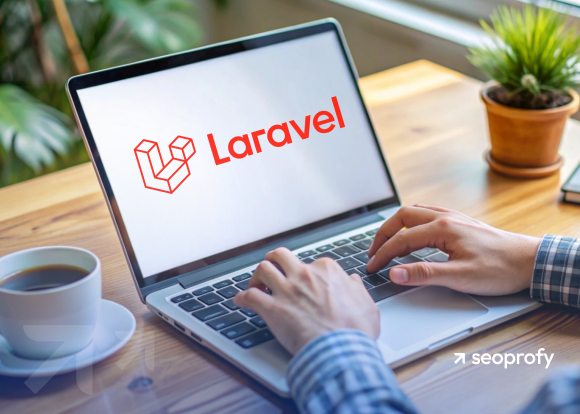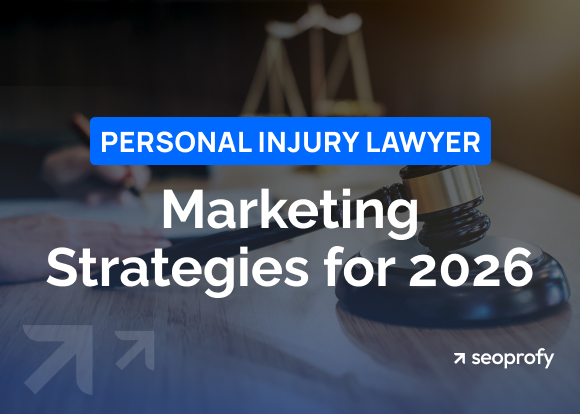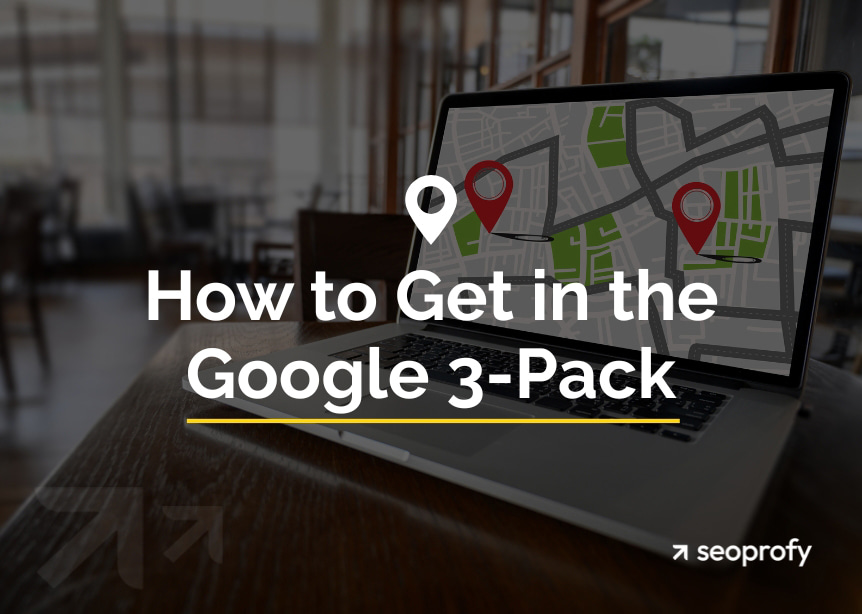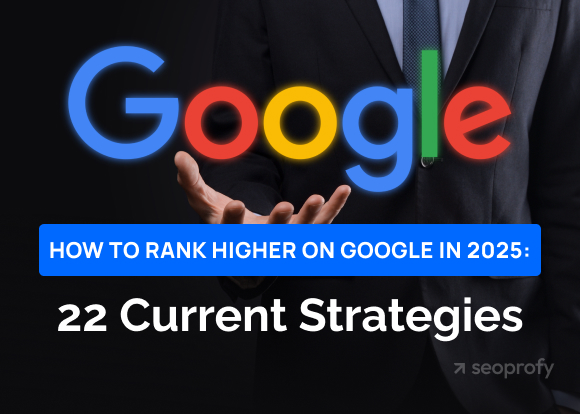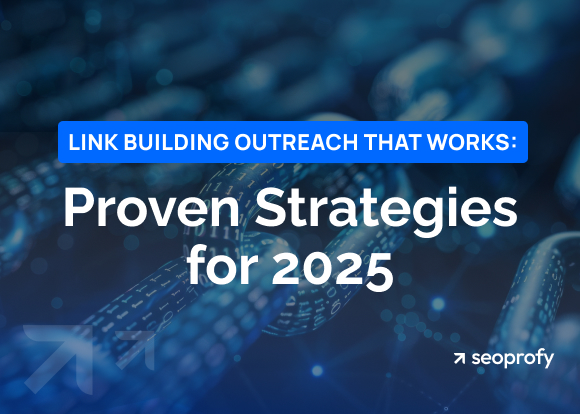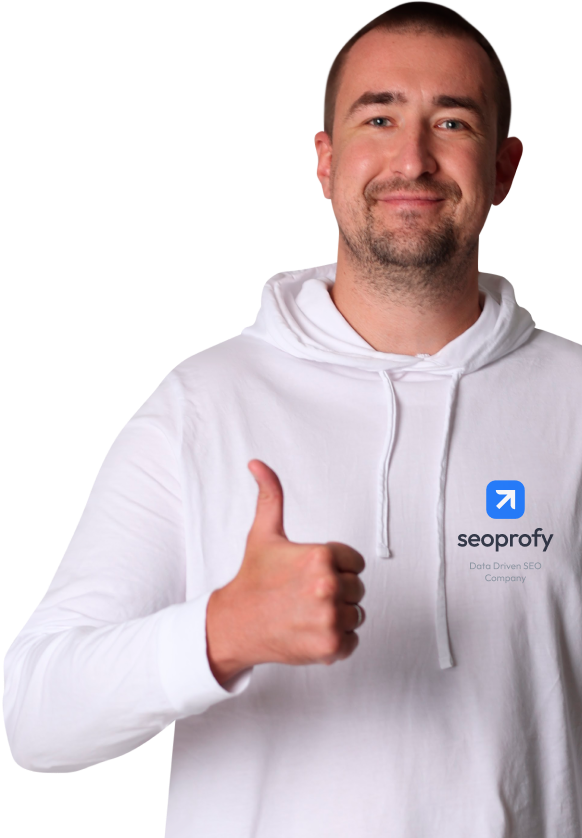July 2025 marked a new step in the evolution of social media SEO. Google started indexing public Instagram content, adding it to the searchable layer alongside YouTube and TikTok. That means social posts from multiple platforms can now appear in traditional search results, especially around discovery and product-related queries.
We put this guide together for teams who want more from social. You’ll learn how to adapt your content, track what’s working, and build a strategy that feeds both engagement and organic discovery.
- Social posts appear in Google results, so how you structure and publish them matters.
- To get results, you need one integrated plan that combines your social media strategy and SEO for social media.
- Use web-style formatting, keyword research, and public settings to give your posts a better shot at visibility.
What Makes Social Media SEO So Important in 2025
Today, your social media posts can bring in traffic not just from the feed but also straight from search results. That shift makes social media SEO a very smart move in 2025. It helps your brand get noticed, earn clicks, backlinks, and build trust across more platforms where people are already looking.
Meanwhile, the number of social media users keeps climbing. In 2025, the gap between internet users and social media users is almost gone. Out of 5.56 billion people online, 5.24 billion are active on social platforms. Our statistics say that Instagram remains the most popular platform among users, followed by Facebook, YouTube, TikTok, Twitter/X, Pinterest, LinkedIn, and Threads.
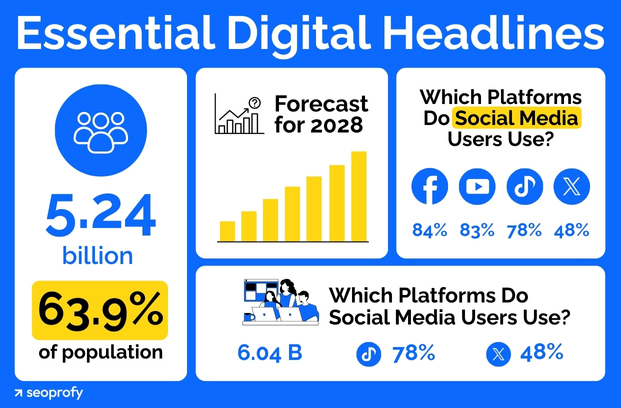
And that is not all. While Google keeps adding more social platforms to its index, users are also shifting how they search. For younger generations, social media is already their main discovery channel. Around 46% of Gen Z and 35% of millennials prefer searching on social platforms instead of using traditional search engines.
But they are not just scrolling for fun. For example, 29.4% of people aged 35 to 44 go to social media to find and buy products (with integrated shopping features). The numbers are similar for other age groups too: 28.7% for those aged 45 to 54 and 27.7% for the 25 to 34 range. For brands, this is a clear signal to start treating social media SEO not as an add-on, but as a real opportunity to drive traffic to their sites and build it into the core of their funnel.

Here’s the full list of what makes social media SEO a must-have in 2025:
| Reason | What it provides |
| Posts can drive traffic not only to the social platform but also indirectly to the website through profile links, pinned stories, or other funnels | An additional channel for bringing visitors to the site without relying on traditional search |
| Instagram posts can be indexed and appear in Google faster than new website pages | A way to test topics and capture traffic on trending queries while an article is still in preparation |
| Ability to get an additional space in the SERP | Higher click probability when the brand appears both in organic results and in social media blocks |
| Strengthens the brand footprint in search | Creates a sense of dominance on a topic and improves trust and memorability |
| Helps attract backlinks | Viral content from social media channels can be picked up by blogs and media, bringing SEO valuable links |
| Access to audiences who do not search on Google | Especially important for Gen Z and millennials, who often start product discovery on TikTok or Instagram |
| Influence on search algorithms through branded queries | Social media activity increases branded searches, which can have a positive effect on rankings |
| Opportunity to optimize for voice and visual search | Social platforms with short videos and images work well for content that can appear in these search formats |
How to Get Visibility, Traffic, and Leads Through Social Media
Now that social media SEO is on your radar, let’s make it work. Below, you will find clear steps to improve visibility, drive clicks, and turn social content into leads.
Optimizing Social Profiles for SEO
Search engines treat public social profiles like any other crawlable content. That means they index your username, display name, bio, and any publicly visible fields. If those elements are incomplete or poorly structured, you are missing out on rankings that could support both branded and non-branded discovery.
Usernames and Handles
Use the same brand-aligned username across platforms. If your business name is taken, append a relevant keyword or location: @oakandlinen.home, @westcoastlegal.ny. Platforms like Instagram and TikTok treat handles as searchable fields, so this directly impacts discoverability.
Display Names
On TikTok, Instagram, and Pinterest, the display name is also indexed. That gives you one more opportunity to add a keyword. For example, “Hamilton Law Group | Family & Estate Lawyers” has more chances to rank higher than “HLG Team”.
Bios and Descriptions
Skip slogans. Write what you do in plain language using keywords with proven search volume. Check Search Console or Ahrefs to find terms you already rank for, and repurpose those in your bio. Prioritize:
- Primary services or products
- Location (if you serve a region)
- Clear CTA with a link
Take Asana, for example. In the US, it ranks well for high-intent queries like workflow management software, best software for project management, and management software (though the site overall has broad semantic coverage).

Their Instagram bio reflects this clearly by using descriptive phrases tied to those terms. On X, the bio is less specific and misses key phrases. On TikTok, the wording shifts again and skips the core keywords. As a result, this may limit their organic discoverability on those platforms to branded searches or algorithm-driven reach.
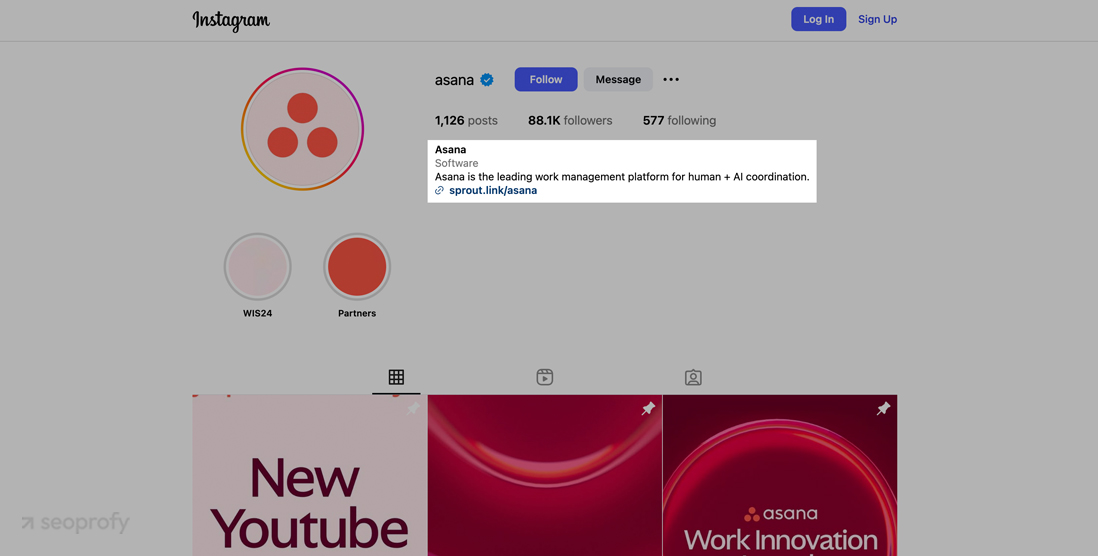
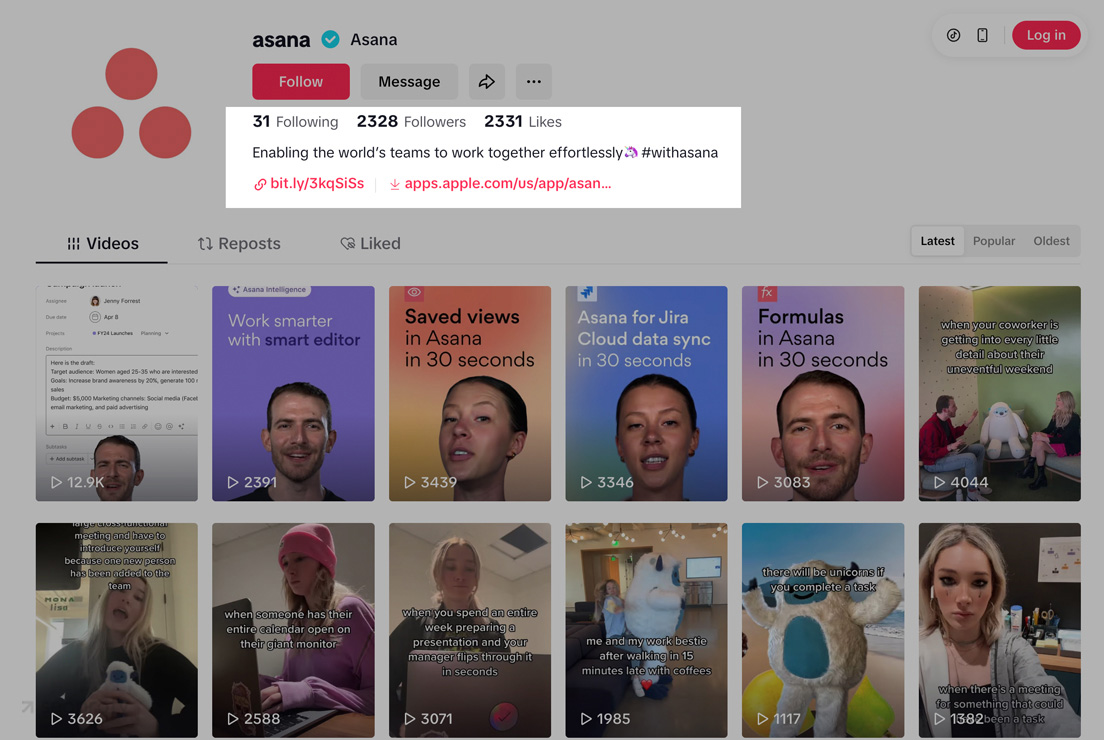
Tailor slightly by platform. Instagram bios are short, so lead with your value prop. Facebook allows longer About sections: use them for structured info with key phrases. Pinterest and YouTube let you add multiple links and categories, so you might as well fill everything.
Take another look at Asana’s profiles. On YouTube, they’ve used the extended description field to give a more complete picture of what the brand offers.
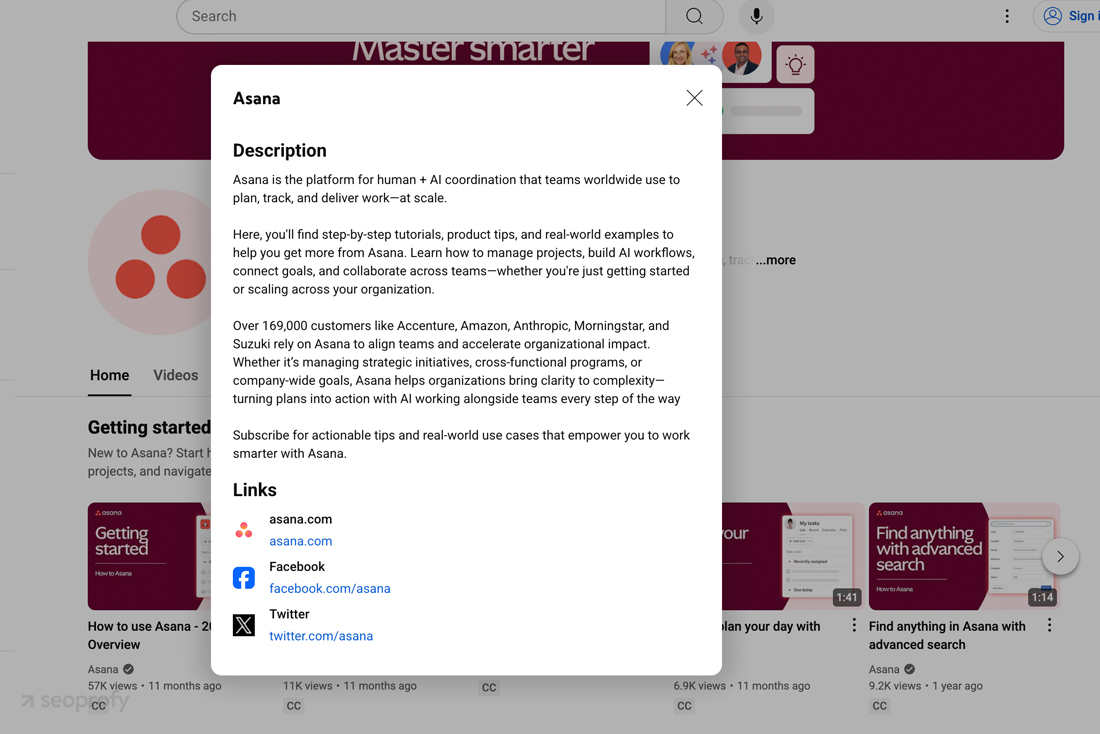
Track Everything with UTM Parameters
Another valuable step in social media SEO: when you link to your website from social profiles, add UTM parameters. This allows you to track clicks in Google Analytics and see exactly where your traffic comes from.
Use naming conventions that make sense. For example:
- utm_source=instagram
- utm_medium=profile_link
- utm_campaign=brand_visibility_august
You can create and manage these links using a simple spreadsheet or tools like Campaign URL Builder. If you skip this step, your profile traffic will show up as “direct” and you’ll lose attribution.
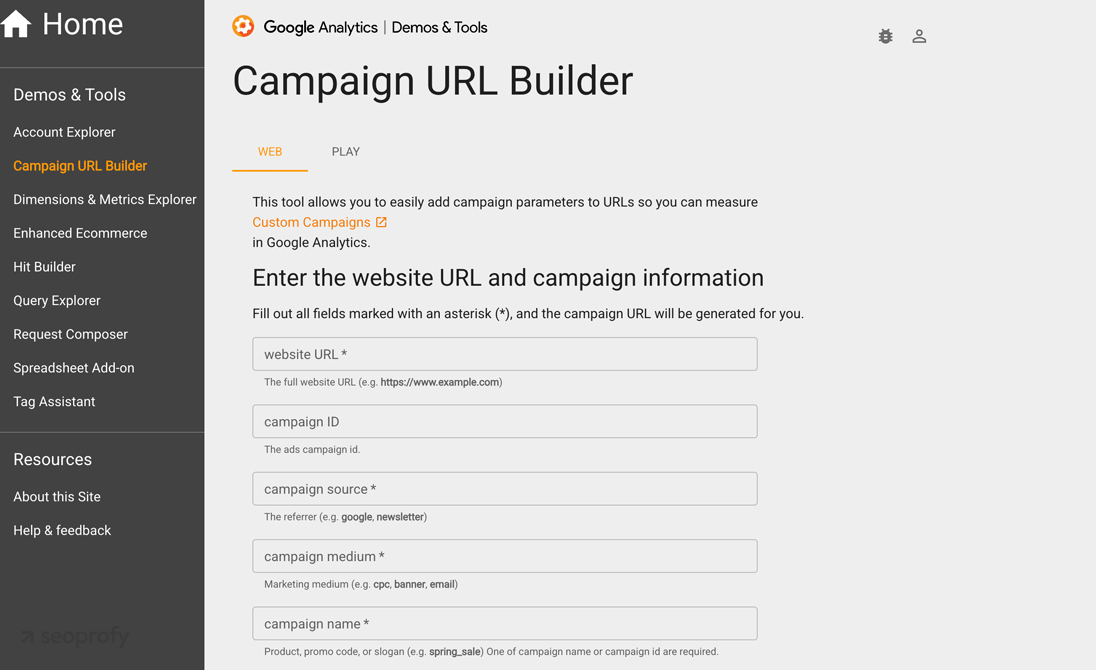
Profile Completeness Affects Rankings
Profiles missing business category, website URL, or location info send weaker trust signals. These fields support entity recognition and help your brand qualify for rich snippets, local packs, and brand panels.
Moreover, Google cross-checks bios, URLs, contact info, and CTAs across platforms. Mismatched data may potentially weaken your authority. Use a shared doc to maintain up-to-date information for every channel.
Optimizing Posts and Content
Optimizing your profiles is only part of the job in SEO for social media. To rank and drive results, you need to treat every post like an indexable asset. That means creating content that is both engaging and structured for search.
Start by understanding how each platform indexes content:
- TikTok prioritizes captions and on-screen text
- Instagram uses alt text, captions, and location tags
- YouTube looks at titles, descriptions, tags, and transcripts
Each one weighs inputs differently. So, your optimization must reflect that.
Use tools like Ahrefs or Semrush to find high-volume phrases people actually search for. In Ahrefs, enter a seed keyword into Keywords Explorer, filter by your target country, then sort by search volume and keyword difficulty. Focus on longer phrases with clear intent, like “best supplements for runners” or “how to clean suede shoes.”

Build them into captions, spoken words, overlay text, and file names. If your post is about a product, say exactly what it is. A phrase like “best running shoes for flat feet” may make it more discoverable than something vague like “check this out.”
On top of that, when possible, use a clear structure inside posts:
- Captions that answer a specific question
- Numbered or bulleted lists
- Phrases people are likely to type into a search box
That way, both users and search engines (including AI) can make sense of your content much faster.
Try repurposing what works. A LinkedIn carousel can be rebuilt into an Instagram video or a text post on X.
However, since social posts from multiple platforms can now rank in Google, copy-pasting the same post across channels can backfire. Google may treat near-identical content as duplication, which reduces the chances of multiple versions showing up in the results. Instead, tweak the angle, rephrase your message, and align with how people search on each platform.
Finally, in social media SEO, do not treat posts as short-lived content. Many of them stay visible in search and feed for weeks or longer (we’ll cover which metrics to focus on later in the article). If a post still gets views but no engagement, update the format or caption.
Think of your posts the same way you think of blog content.
Refresh, optimize, and measure again.
Instagram SEO Strategy
Instagram offers multiple content formats, each with social media SEO potential, and they work for completely different niches, from ecommerce to legal. For example, according to our legal marketing stats, 71% of lawyers report generating new leads from social media.
Reels now appear directly in Google search. That’s because Google is competing with TikTok and wants to surface more short-form video. If you’re not using Reels, you’re cutting yourself off from one of the fastest-growing discovery formats.
Reels also perform well within the platform itself. According to Datareportal, Reels have an advertising reach of over 726 million users. They account for half the time users spend on Instagram.
Stories are still relevant, but work differently. They’re mostly image-based, as video stories tend to have higher exit rates. While Google does not index them, Stories are one of the few formats on Instagram where you can include a clickable link to your site. That makes them a useful channel for driving traffic, unlike regular posts, which don’t support external links.
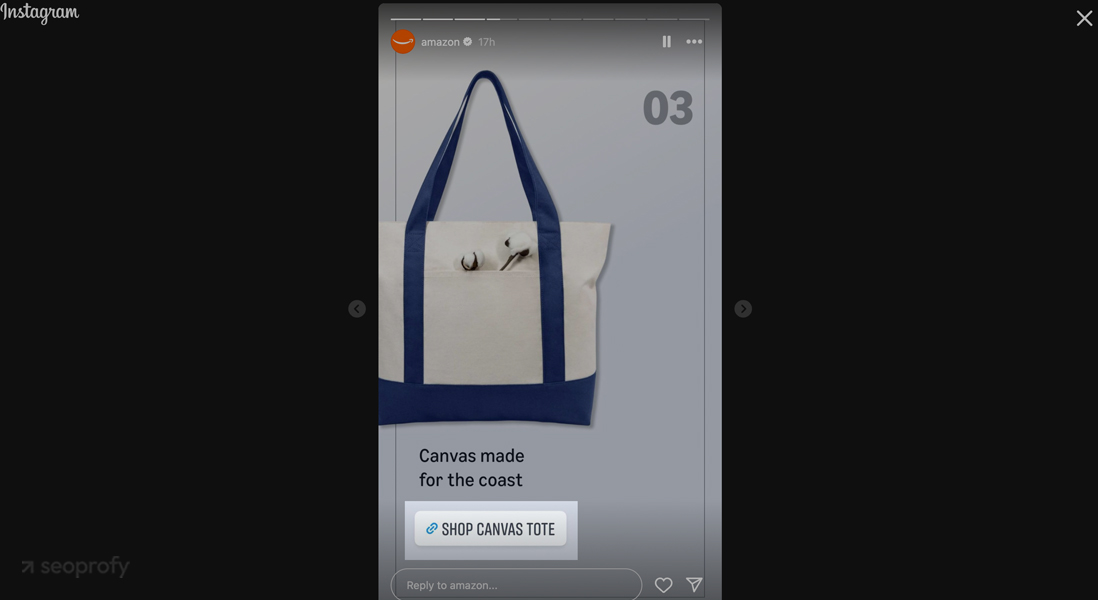
What Google does index is image+text posts. If you’ve already optimized the captions, it’s worth considering the visuals too.
Search engines powered by AI are no longer limited to alt text or file names. They extract embedded text, recognize logos, interpret context, and can even assess brand tone or detect signs of spam within images.
To improve indexability in social media SEO, your visuals should be:
- Cleanly composed
- Free of visual clutter or overlays
- Branded only if the logo is subtle and doesn’t interfere with readability
- Designed with clear, legible text that can be picked up by OCR
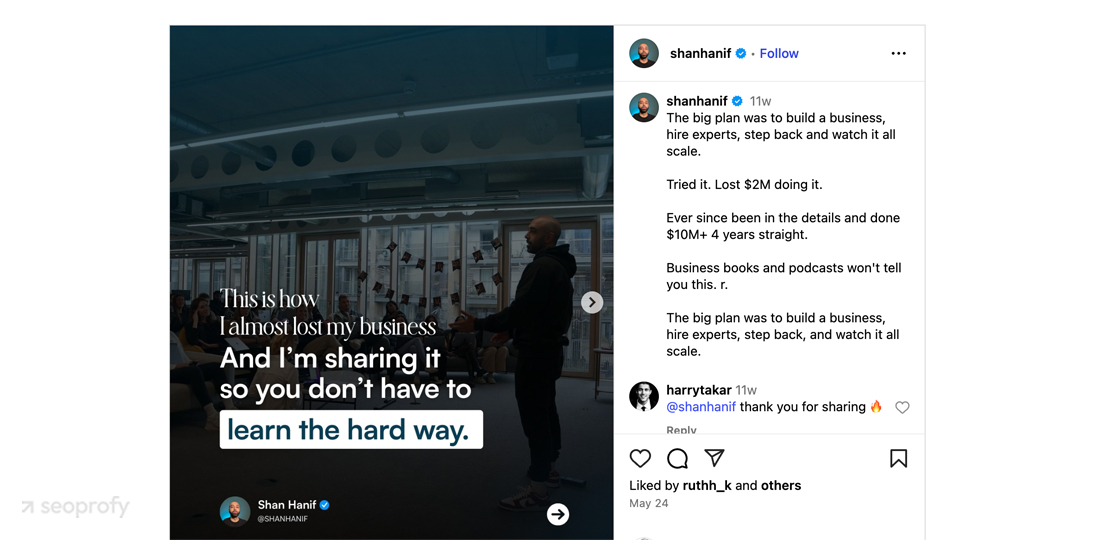

How to configure Instagram for Google indexing?
- Go to your profile settings
- Make sure your account is set to public
- Switch to a Digital Creator or Professional account, since personal profiles are less likely to be indexed
- Check that Reels, Highlights, and Posts are all visible without login restrictions
- Use direct post URLs when linking externally, for example, in blogs or link building campaigns
TikTok SEO Strategy
TikTok is a strong discovery channel when you focus on short, search-friendly content. The most effective format is a short-form video that answers a specific question or solves a small problem.
What works best:
- Use target keywords in on-screen text, captions, and spoken audio
- Say your main keyword out loud for voice recognition
- Add a clear title to the video thumbnail
- Pin high-performing videos that drive traffic or saves
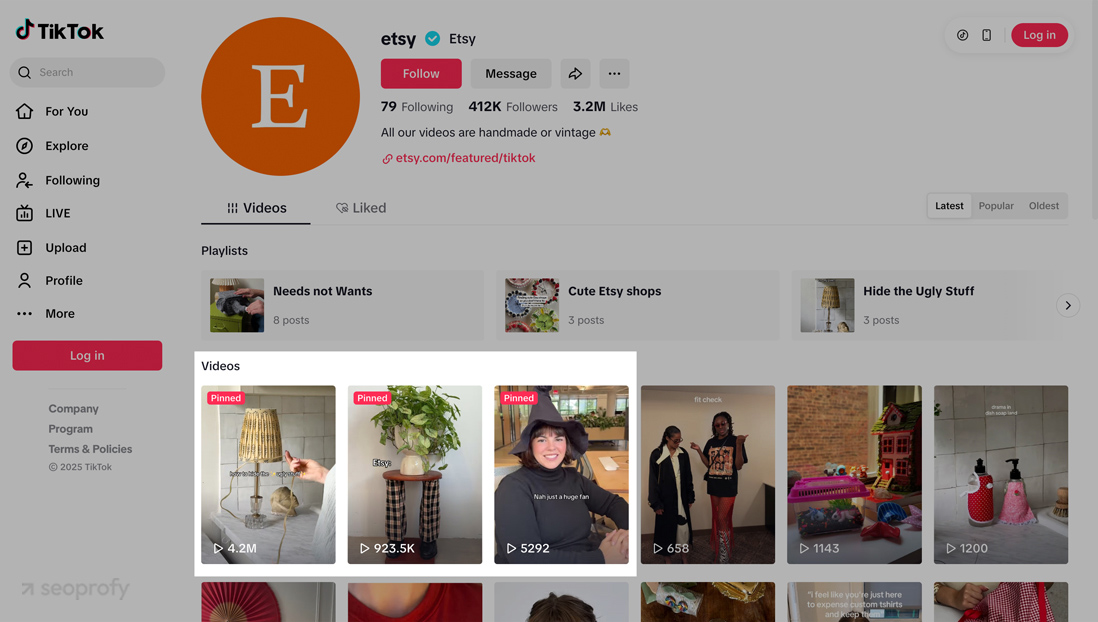

- Repurpose high-performing content with a new angle or format
How to set up your TikTok profile for Google indexing?
- Go to profile settings
- Switch to a Business Account
- Make sure your profile and videos are public
- Set video visibility to “Everyone” before posting
- Share individual video URLs when linking externally
LinkedIn SEO Strategy
Full-length articles published on LinkedIn often compete directly with blog posts in search results. If your audience is active on LinkedIn, it’s worth building a consistent publishing strategy, especially if your B2B brand focuses on SaaS SEO or digital marketing.
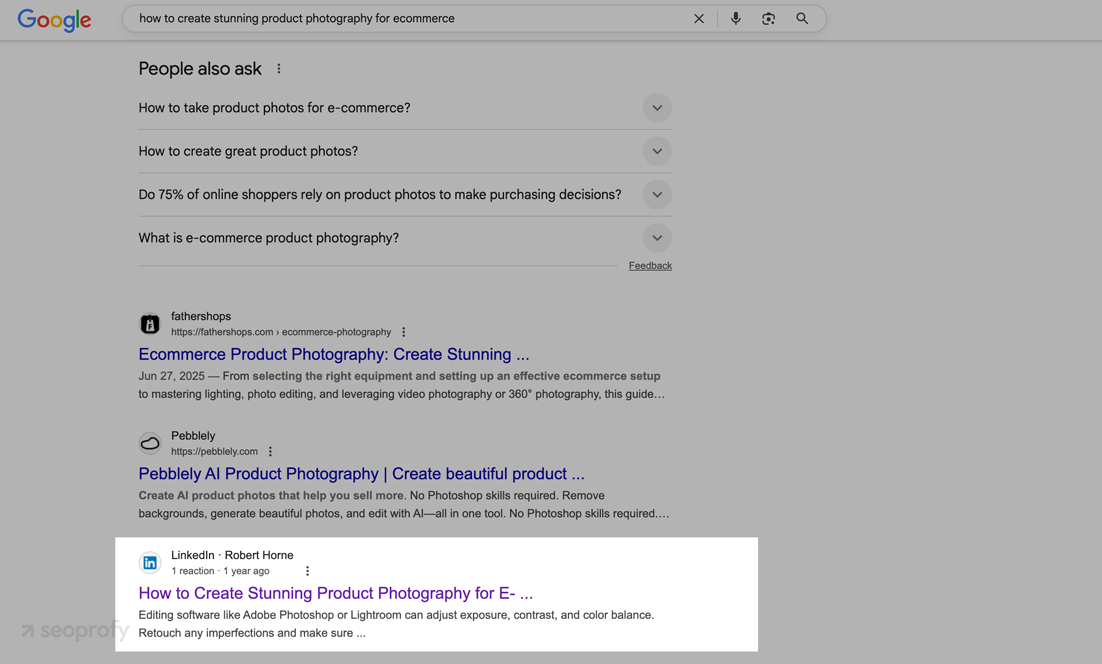
What works best:
- Write long-form articles using target keywords in the title, intro, and subheadings
- Use bullet points, quotes, and web-style formatting to make articles easy to skim
- Republish or reframe content from your website, but update the structure to avoid duplicate content
- Create carousels and posts that lead into your article
- Use internal LinkedIn links between your posts and profile
How to set up your LinkedIn profile for Google indexing?
- Go to your profile settings
- Make sure your profile visibility is set to “Public”
- Enable public visibility for “Articles and activity”
- Use a consistent custom URL with your name or brand keywords
- Share direct links to your articles externally for backlinks and indexing
Reddit SEO Strategy
Reddit threads often rank well for niche queries, especially when there’s little content elsewhere. Google indexes both individual posts and comment sections, so your replies can also drive visibility.
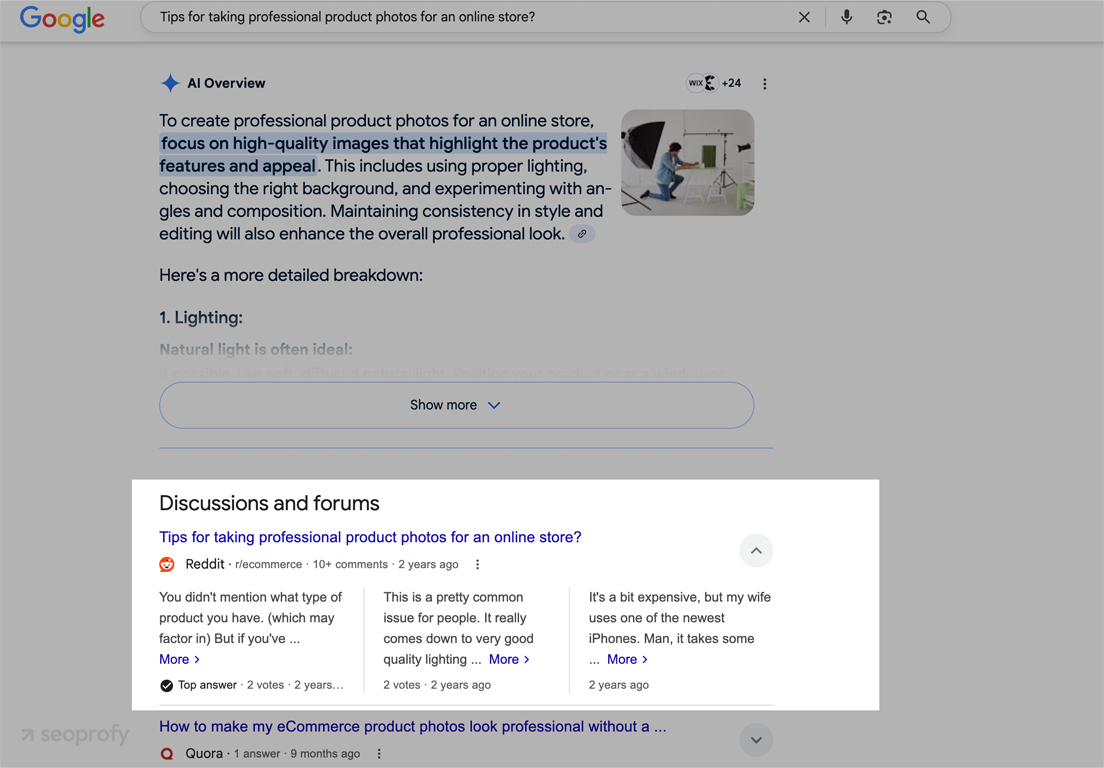
What works best:
- Join relevant subreddits with high engagement
- Create threads around question-based or comparison keywords
- Add original insights, not just links
- Use keywords naturally in titles and body text
How to make Reddit content indexable?
- Use a public account with a visible post history
- Avoid posting in private or restricted subreddits
- Link directly to the thread when sharing externally
- Choose subreddits that allow indexing (check robots.txt or test visibility in Google)
X (Twitter) SEO Strategy
In social media SEO, X is best used to support discoverability through fast, high-volume posting and smart internal linking. It’s one of the few platforms where consistency beats production quality.

What works best:
- Use short, clear tweets that answer common questions
- Link between your own tweets to build topic clusters
- Pin the strongest tweet to anchor traffic
- Mention relevant brands/users
- Link to your tweet from blog posts, Reddit, or Quora when relevant
How to make tweets eligible for indexing?
- Go to profile settings and set the account to public
- Under Privacy and Safety, make sure search visibility is enabled
- Share the original tweet link when embedding or linking externally
Facebook SEO Strategy
Facebook content rarely ranks on its own, but it can strengthen your social media SEO strategy when used for engagement and link distribution. Focus on community interaction and visibility outside your follower base.
What works best:
- Share blog posts with SEO‑friendly captions
- Encourage comments to extend post lifespan
- Use Facebook Groups to build topical authority
- Embed post links into blog comments or niche forums
How to configure your Facebook profile for search visibility?
- Use a public Page instead of a personal profile
- Set all posts and Page info to public in settings
- Add a keyword‑rich About section with a backlink to your site
- Check “Publish as your Page” for all external shares
Integrating Social and Traditional SEO
When your social content and search engine optimization work in sync, you stop thinking of them as two separate channels. Social media marketing gives you speed, reach, and target audience engagement. SEO gives you long-term visibility and authority. Put them together, and each one amplifies the other.
Cross Link with Purpose
Make every social post a doorway back to your site. If you share a product demo on Instagram, link straight to the product page. If you post a tip from your blog on LinkedIn, link to the full article. These links bring in warm traffic and tell Google that people find and follow your content.
Turn Blog Posts Into Social Fuel
Your best-performing articles are already proven to attract interest. Break them into short videos, carousels, or quick tip posts. Give people just enough to spark curiosity so they click through to read the full piece on your site.
Get Others Talking About You
Work with influencers, partners, or loyal customers who can share your content and link directly to important pages. Use platforms like Upfluence, Aspire, or CreatorIQ to connect with influencers.

Consider tools like Billo or Insense to find UGC creators who can produce authentic content for both social media platforms and SEO landing pages. A mention from the right person sends you traffic today and builds link authority that pays off for months.
When social and SEO feed each other like this, you create a loop where every campaign, post, and backlink makes both channels stronger. The result is more visibility, more trust, and a bigger slice of the search results.
| Purpose | Tool | What to Track |
| Trend Discovery | Glimpse | Rising search topics across platforms |
| Pinterest Trends | Seasonality, interest growth | |
| TikTok Creative Center | Trending sounds, hashtags, ads | |
| X (Twitter) Explore | Viral discussions in real time | |
| Keyword Research | Semrush | Keyword overlap across search and social |
| Ahrefs | Cross-platform keyword performance | |
| Google Trends | Regional and time-based interest | |
| Performance Analytics | Instagram Insights | Reach, saves, shares, profile actions |
| Facebook Page Insights | Clicks, reach, engagement | |
| TikTok Analytics | Watch time, traffic source breakdown | |
| YouTube Studio | CTR, watch time, viewer retention | |
| LinkedIn Analytics | Post reach, engagement, follower growth | |
| Google Analytics 4 | Referral traffic from social platforms to your website |
Common Social SEO Mistakes to Avoid
Better to learn from other people’s mistakes than waste time on your own. We have collected the biggest red flags in social media SEO so you know what to watch out for.
- Incomplete profiles with missing location, category, or website link
- Branding that changes from one platform to another, so people do not instantly recognize you
- Keyword stuffing in bios, captions, or hashtags that makes your content feel forced
- No alt text on images, which means you miss easy wins for accessibility and SEO
- Skipping analytics so you have no idea what is actually working
- Posting without engaging which makes your audience less likely to respond next time
Final Takeaways: Building a Sustainable SEO Engine
Your SEO doesn’t stop at your website. A good social media SEO strategy makes sure every post, video, and profile plays a part. And when done right, the social media impact SEO delivers traffic from places your competitors miss.
If you’re not sure where to start or need help building a proper SEO foundation, our team at SeoProfy is here to help. We’ve been doing this for years and know how to turn organic traffic into real growth.



